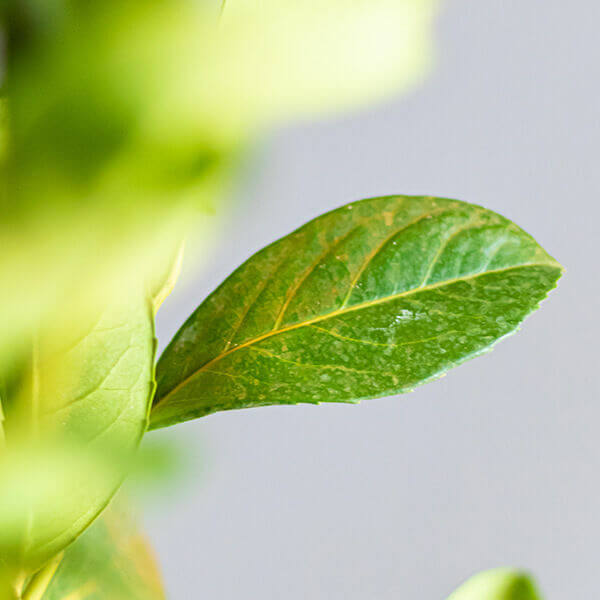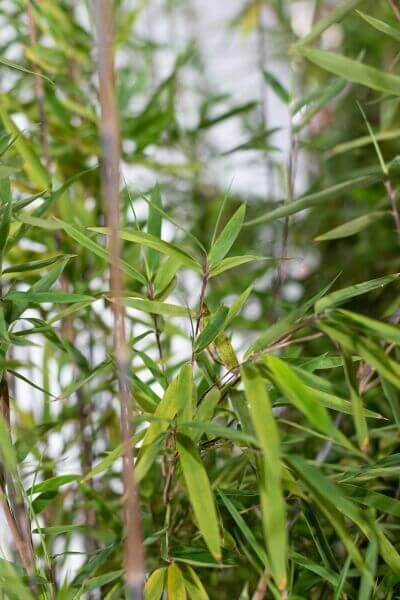Best Hedging Plants For Coastal Areas
Improve your garden's attraction with lush hedge ranges such as Yew (Taxus), Thuja, Laurel, Photinia, and Bamboo, commemorated for their structural stability and ecological advantages.
Yew and Thuja offer evergreen protection and winter durability, while Laurel provides rapid growth and broad, fragrant leaves.
Photinia includes seasonal beauty with its lively red foliage, and Bamboo provides a low-maintenance, peaceful ambiance.
These hedges improve air quality, reduce sound, and produce tranquil, private spaces.
Appropriate planting, spacing, and upkeep ensure vigorous growth and environmental harmony.
Explore how these lavish varieties can raise your garden's charm and well-being.
Secret Takeaways
Change Your Garden With Lush Hedge Varieties
- Select Yew for its dense, evergreen development and unrivaled longevity.
- Go with Laurel for its fast development and broad leaves, making sure quick personal privacy.
- Choose Photinia for its dynamic seasonal foliage, which turns a striking dark red.
- Make use of Bamboo for a low-maintenance, winter-hardy hedge with aesthetic appeal.
- Area plants 2-3 per meter and prune frequently for optimum growth and health.
Popular Hedge Plants
When changing a garden with rich hedge varieties, it's vital to think about popular hedge plants such as Yew, Thuja, Laurel, and Photinia due to their unique attributes and benefits.
Yew (Taxus) is extremely esteemed for its durability and thick, green growth, making it a prime option for enduring landscapes.
Thuja is noted for its evergreen foliage and robust winter season resilience.
Photinia adds seasonal vibrancy with red leaves that darken in time, producing dynamic visual appeal.
Laurel offers fast development and fragrant, broad leaves, suitable for fast privacy.
In Addition, Bamboo is an exceptional choice for ambiance, using a low-maintenance, winter-hardy choice that boosts the garden's aesthetic with its elegant, swaying canes.
These selections accommodate a variety of horticultural needs and preferences.
Benefits of Garden Hedges
Garden hedges use a multitude of benefits, making them an important addition to any landscape. These natural barriers are affordable to execute and offer considerable wind security, boosting air flow and adding to noise decrease. The dense foliage of hedges like Thuja and Beech ensures personal privacy by blocking visibility, producing a tranquil and remote environment.
Hedges also play a crucial role in microclimate policy, supplying a steady environment that cultivates plant development and reduces temperature level fluctuations. Their complex leaf structures filter contaminants, improving air quality and contributing to a much healthier garden ecosystem.
Furthermore, hedges master noise reduction, taking in and deflecting sound waves to lower ambient sound levels. This dual functionality of offering both acoustic and visual personal privacy improves the overall tranquility and aesthetic appeal of any garden.
Planting and Maintenance Tips
For an effective hedge, careful preparation of the planting location is essential. Guarantee the soil has proper pH and drain to support strong root advancement.
Space the plants appropriately for the chosen types. Water the hedge often during its preliminary development stage, changing as needed with seasonal changes.
Implement a organized bug control and illness prevention strategy, using organic or chemical treatments when essential. Regularly check for aphids, mites, and fungal infections.
Apply mulch to retain moisture and suppress weeds. Seasonal pruning promotes dense development and air circulation, vital for plant health.
Following these guidelines will assist you cultivate a vibrant, well-maintained hedge that improves the beauty of your garden.
Spacing and Trimming Standards
Spacing and Trimming Standards
Correct spacing and cutting are crucial for cultivating healthy, aesthetically appealing hedges. Adequate spacing guarantees each plant gets adequate nutrients, light, and air flow.
Follow these guidelines for ideal hedge upkeep:
- Spacing: Position hedge plants 2-3 plants per meter to encourage robust growth.
- Pruning Techniques: Routine pruning is essential for preserving wanted hedge height and shape. Trim brand-new development in summer and cut down older wood during winter season.
- Seasonal Care: Adjust cutting schedules and approaches according to seasonal requirements to guarantee plant health.
- Hedge Height: Frequently monitor and cut to keep the wanted hedge height and accomplish consistent visual appeals.
Complying with these steps will ensure your hedge grows, enhancing both the appeal and functionality of your garden.
Selecting the Right Hedge
Selecting the Right Hedge
Choosing the proper hedge includes evaluating elements such as fully grown height, foliage density, and environmental durability. Successful hedge plant choice requires comprehending each species' growth qualities and site-specific flexibility.
For instance, Yew (Taxus) provides excellent longevity and dense development, while Thuja is notable for its winter resilience. Additionally, considering maintenance requirements is crucial; fast-growing species like Laurel or Privet need regular cutting, whereas low-maintenance choices like Bamboo or Ivy might be more suitable for those looking for very little upkeep.
Ecological factors such as soil type, light availability, and moisture conditions should also assist the choice procedure. This cautious method makes sure the picked hedges will prosper, supplying both visual and practical benefits to the garden landscape.
Shipment and Planting Suggestions
To ensure your hedge plants thrive, they need to be provided by specialized carriers and planted without delay upon arrival.
Follow these important steps for effective planting:
- Soil Preparation: Improve the soil with raw material to enhance drain and nutrient content.
- Planting Depth: Develop a trench two times the width and equivalent to the depth of the root ball.
- Watering Methods: Water completely after planting, keeping the soil consistently damp however not saturated.
- Mulching: Use a layer of mulch to keep moisture and suppress weeds.
Client Support and Service
Offered the crucial function of timely assistance in horticultural pursuits, our consumer assistance team is offered six days a week through telephone, email, and social media to provide skilled recommendations and quickly deal with any concerns. Their commitment to fast action times guarantees consumer fulfillment by solving inquiries connected to plant health, ideal planting methods, and maintenance schedules.

Communication Technique
----------------------
6 days a week
6 days a week
Within 24 hr
This thorough support group, enhanced by an outstanding 9.3/ 10 client rating, highlights our dedication to boosting the gardening experience for every client.
Often Asked Questions
The Length Of Time Does It Consider Hedge Plants to Establish?
Hedge plants typically require one to three years to end up being fully established, with the specific duration differing by types and growing conditions.
Effective care throughout this important duration is vital for robust growth. Consistent watering, vigilant weed control, and proper fertilizer application are pivotal in promoting strong root advancement.
For example, fast-growing types like Laurel might establish faster, while slower-growing ranges such as Yew may take longer. Persistent maintenance speeds up the establishment procedure, leading to healthy and dense hedges.
What Are the Best Hedge Plants for Personal Privacy?
The question of the best hedge plants for personal privacy involves examining evergreen and deciduous options.
Evergreen hedges like Thuja, Laurel, and Cypress supply year-round coverage, making sure continuous personal privacy.
In contrast, deciduous hedges such as Beech use seasonal privacy, shedding leaves in chillier months.
Secret maintenance pointers for privacy hedges consist of regular cutting, fertilizing in spring, and proper spacing-- usually 2 to 3 plants per meter.
Additionally, consistent watering and thorough weed removal are essential for promoting healthy, thick growth.
Can Hedge Plants Attract Wildlife to My Garden?
Yes, hedge plants can bring in wildlife to your garden by offering important advantages like shelter, food, and nesting websites, thus enhancing local biodiversity. For instance, yew, holly, and laurel are exceptional for attracting birds, while ivy supports a range of insects.
Nevertheless, it's important to note that there are some downsides, such as increased upkeep to handle insects and routine maintenance. Carefully choosing and preserving hedge ranges can help balance these downsides and benefits, ultimately promoting a vibrant and sustainable community in your garden.
Are There Any Flowering Hedge Plants Available?
Yes, there are flowering hedge plants offered that can improve the charm of your garden.
For example, Elaeagnus, also called Olive Willow, produces fragrant white flowers in the fall, adding a touch of elegance.
Photinia, another popular choice, showcases vibrant red leaves that mature into an abundant green, developing a vibrant visual impact throughout the seasons.
To guarantee these plants prosper, it's necessary to practice proper pruning techniques and seasonal maintenance, such as cutting brand-new development in the summertime and cutting down in the winter season.
These procedures will assist keep the health and aesthetic appeal of your flowering hedges.
How Do I Prevent Pests in My Hedge Plants?
To prevent pests in hedge plants, employ natural pest control methods and preserve appropriate hedge care. Present helpful pests like ladybugs, which victimize hazardous pests, to develop a well balanced environment.
Frequently examine your hedges for signs of problem and promptly remove any afflicted parts to avoid the spread. Additional hints Ensure the health of your hedges by using balanced fertilizers and supplying sufficient water.
Utilize mulching to maintain soil moisture and correct spacing to decrease plant tension and promote robust growth. These practices jointly help in minimizing bug issues and keeping a healthy hedge.
Conclusion
In essence, selecting the ideal hedge varieties such as Yew, Thuja, and Laurel can change any garden into a peaceful sanctuary. These plants provide year-round plant, boost visual appeal, and deal useful benefits like sound decrease and wind security.
Appropriate planting strategies, accurate spacing, constant watering, and seasonal trimming are essential for ideal development.
Trusted shipment services and expert customer support ensure a seamless experience from purchase to planting, making it simpler than ever to elevate your outdoor space.
Garden hedges offer a wide range of benefits, making them a valuable addition to any landscape. These natural barriers are cost-effective to execute and supply substantial wind protection, enhancing air circulation and contributing to noise decrease. The dense foliage of hedges like Thuja and Beech makes sure privacy by obstructing visibility, developing a peaceful and secluded environment.

Pruning Strategies: Regular pruning is necessary for preserving preferred hedge height and shape. Cut new growth in summer and cut back older wood during winter.